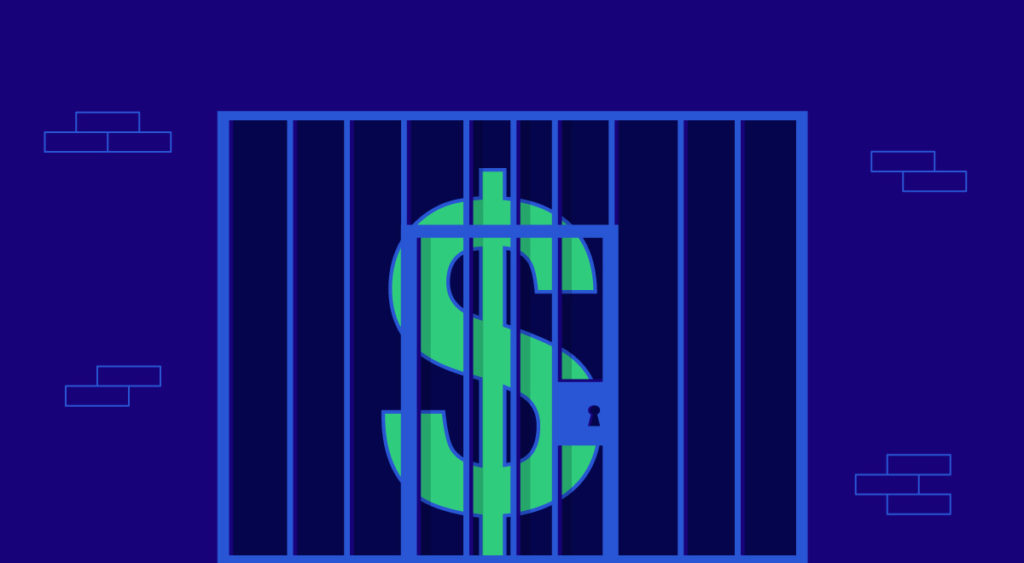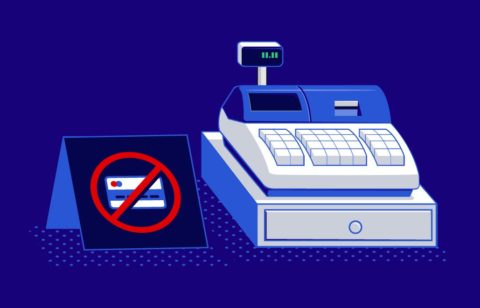If you feel like you’re swimming in a sea of credit card debt, one of your life preservers could be debt forgiveness. As of 2020, the average American was carrying $5,315 in credit card debt, according to the Experian credit bureau. Of course, your debt almost certainly is higher or lower than that. But regardless of the amount, you could be running into trouble paying it off. That’s where debt forgiveness may come to the rescue.
What Is Credit Forgiveness?
Credit forgiveness, also called debt forgiveness, debt settlement, debt relief, or debt cancellation, refers to a creditor eliminating some or all of your debt. Debt forgiveness can apply to student loans, federal taxes, credit cards, and other types of debt.
Can Credit Card Debt Be Forgiven?
Credit card debt can be forgiven in a couple of ways.
Working with a credit card issuer
You can chat with a credit card issuer to discuss the difficulty you’re facing with paying your bills. Some credit card issuers may be willing to wipe out some or all of your debt, while others won’t erase a penny of what you owe.
This process is called DIY debt settlement since you’ll be doing the negotiating on your own.
A credit card issuer typically won’t forgive your debt until you’re seriously behind on making payments. In many cases, a card issuer will turn this debt over to a debt collector. However, a card issuer might just skip that step and work directly with you on forgiving some or all of your debt.
A credit card issuer might be more inclined to approve a debt settlement if you’ve lost your job or suffered another financial setback. Many credit card issuers have stepped up their debt relief programs to help people whose finances have taken a hit during the COVID-19 pandemic.
Keep in mind that if a credit card issuer decides to forgive only part of your debt, you’ll need to come up with enough cash to cover the amount that you still owe.
Working with a debt settlement program
If a credit card issuer won’t agree to debt forgiveness, you might try a debt settlement program. It’s worth noting, however, that you typically must owe at least $10,000 and must be at least six months behind on credit card payments to be a strong candidate for debt relief.
Debt settlement programs typically are operated by for-profit companies. A debt settlement company negotiates on your behalf to reduce the amount you owe to a credit card issuer. In this situation, the settlement company and the card issuer will reach an agreement on a lump-sum payment that’ll cover the lower amount.
Generally, a debt settlement company asks you to make monthly payments into an account that’s set up in order to eventually pay the lump-sum amount. The debt settlement company often will direct you to stop sending payments directly to the credit card issuers involved in your debt settlement.
A debt settlement company typically charges fees ranging from 15% to 25%, based on the amount of debt (called “enrolled debt”) that you have when you sign up for debt relief. Federal law prohibits these fees from being charged until your debt is fully settled.
What Percentage Of Debt Will Credit Card Companies Settle For?
Credit card issuers generally will accept a settlement of anywhere from 30% to 80% of the amount of your outstanding debt. In many instances, a card issuer will agree to a settlement of 30% to 50%.
What Are The Drawbacks Of Debt Forgiveness?
Although debt forgiveness offers advantages, it also comes with some disadvantages. The disadvantages include:
- Decrease in credit score. Debt forgiveness will leave a negative mark on your credit report, leading to a drop in your credit score. It may take a while after the debt forgiveness becomes final for your credit score to bounce back.
- Taxes. If more than $600 in debt is forgiven, you’ll likely be required to pay taxes on the amount of forgiven debt.
- Lump-sum payment. In a lot of situations, a creditor will want a lump-sum payment to forgive your debt, rather than letting you pay off the debt in smaller chunks.
- Debt collection. Debt collectors might not stop nagging you about the money you owe. In fact, they might even sue you in an attempt to recover money.
- Length of process. It may take you as long as three years for a debt settlement arrangement to be completed.
How Do I Pay Off A Credit Card If I Have Very Little Money?
If you have very little money to pay off credit card bills, you might look into a debt management plan. The National Federation for Credit Counseling explains that these plans let you make a single monthly payment to a nonprofit credit counseling agency, which then distributes that money to your credit card companies and other creditors. To help you decrease your debt, creditors might lower your interest rates or waive fees.
While your credit report will reflect the fact that you’re participating in a debt management plan, this won’t cause your credit score to rise or fall. That’s because providers of credit scores don’t use that information to calculate your score.
Alternatives To Credit Forgiveness
If you’re struggling to pay off credit card bills, debt forgiveness isn’t the only answer. Here are two other options.
Debt consolidation
When you consolidate debt, you combine credit card debts, loans, and other bills into a single monthly payment. This is designed to lower the overall interest rate on the debts and make it easier to manage monthly expenses. You can consolidate debt in a couple of ways:
- Debt consolidation loan. With this type of loan, you essentially put much if not all of your debt under one umbrella. Using this approach, you may be able to lower your overall monthly payment and get rid of your debt more quickly. This loan may be a personal loan, or you might put proceeds from a home equity loan or home refinancing loan toward paying off the debt.
- Balance transfer. A balance transfer lets you move high-interest credit card debt to a credit card with a lower interest rate or no interest rate at all. In some cases, the attractive interest rate may last for only a set period of time, like 12 months. Therefore, in order to take advantage of the better interest rate, you’ll need to pay off the entire balance before the special interest rate expires.
Bankruptcy
Bankruptcy is a last-resort option for handling your credit card debt.
When you go to court to file for bankruptcy, you’re aiming to wipe out or at least chip away at many of your debts, including credit cards. Not all debts qualify for bankruptcy, though. These include student loans, auto loans (if you want to keep your car), child support, alimony, and most overdue taxes.
Among the key benefits of filing for bankruptcy are that it gives you a fresh financial start and it stops debt collectors from bugging you.
Drawbacks of bankruptcy include:
- Long-term damage to your credit. A bankruptcy filing could hurt your credit score for up to 10 years.
- Lack of access to credit. When you go through bankruptcy, you’ll be required to close all of your credit card accounts. Furthermore, a bankruptcy filing that shows up on your credit report may prevent you from obtaining credit cards and loans for years to come.
As a consumer, you can pursue two types of bankruptcy: Chapter 7 and Chapter 13.
Chapter 7 bankruptcy
When people think of bankruptcy, they’re normally thinking of Chapter 7 bankruptcy.
In a Chapter 7 bankruptcy case, debts that don’t involve collateral — credit cards, for example — are eliminated, giving you a clean debt-free slate. Eligibility for Chapter 7 is based on your income. In other words, Chapter 7 won’t be an option if you earn more than a certain amount of money.
In some cases, you may be ordered to sell some assets to help pay off your creditors. But in most situations, you’ll be able to keep your assets.
Chapter 13 bankruptcy
In a Chapter 13 bankruptcy case, you work with a credit counseling service to come up with a court-approved plan to pay all or part of your debts. The repayment period usually lasts three to five years.
One huge plus with Chapter 13 bankruptcy is that, unlike a Chapter 7 case, you can save your home from foreclosure.
At National Debt Relief, we take pride in empowering people to regain their financial stability through our proven debt relief program. Contact us and talk to a financial expert who will work with you to find the best option to settle your debt and help you achieve financial independence.





